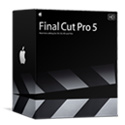Arch
443/646: Architecture and Film
Fall
2005: Course Home Page

contemplations _ of _ zero _ gravity
Wednesdays 10:00 to 2:00,
Cambridge, Main Floor Lecture Hall
Please note: With the exception
of the first class/film, the class will begin at 10 a.m. with discussion/responses
to the previous week's film. The film listed for the week will start
around 11 a.m. "Visitors" will
always be welcome to the class.
Course
Description:
This
course explores the relationship between Architecture and the development
of early and modern films. Students will look at the source and
portrayal of architectural expression in film: precedents for imagery,
its relationship to the development of early modern architecture,
and its vision of the urban future. Contemporary and futuristic
architecture will also be examined in recent films to study its
expression of the vision of the future of urban built form.
 Film
gives us the rare opportunity to completely question all that has come
to be accepted in terms of the language of architecture as well as
architectural and historic convention. Much
of the development of this convention is based upon the existence of
gravity. Gravity
has driven the design of structures and architectural systems since
the notion of shelter was first conceived. The development of all structural
form, from the simple beam, round arch, gothic arch and systems of
vaulting, to more complex structures, has responded to the need to
control gravitational forces.
Film
gives us the rare opportunity to completely question all that has come
to be accepted in terms of the language of architecture as well as
architectural and historic convention. Much
of the development of this convention is based upon the existence of
gravity. Gravity
has driven the design of structures and architectural systems since
the notion of shelter was first conceived. The development of all structural
form, from the simple beam, round arch, gothic arch and systems of
vaulting, to more complex structures, has responded to the need to
control gravitational forces.
The focus of the term will be the exploration of expressions of zero gravity architecture in films over the past 100 years. Film, particularly since the advent of computer graphics and advanced modelling and cinematographic editing software, has increasingly been able to first ignore the force of gravity, and ultimately, to exploit its absence.
The final student film productions will also be asked to both question and address the issue of gravity in their subject matter and formal expression. The question will be asked, and answered: How do we build buildings? How do we build movies?
We will be using FinalCutPro to make our films this term. The undergraduate work will also require the creation of a website using Dreamweaver. Masters student will prepare more "advanced" text intensive research related websites. Tutorials in both of these softwares will be provided.
Students wishing to explore some of these ideas using iMovie, are recommended to look at some additional plug-ins that are available at http://www.imovieplugins.com/ that enable rotation of movies and adjustment of image height (when it goes sideways...). This is not meant as an endorsement of the product. It just works and the plug-ins are relatively inexpensive.... invert clip, angle clip
Pedagogic
Objectives:
The course is
intended to develop a critical perspective of the use of architecture in
film. Students will learn to examine both the medium of film and the form
and style of architecture as they relates to the development of both film
media and culture. Students will engage in research to understand the choices
and expression of architecture used in film, as well as the relationship
between the idea of the future and its relationship to both built and natural
environments.
Completion
Requirements:
The course
will be run in a seminar format. Each week we will view a film,
discuss its relevance to architecture, culture, environments, and
the perception of all three. The discussions will take
place in a “for credit” mode. Attendance is mandatory.
Two missed classes will constitute failure of the course.






 Oct 12
Oct 12

 Nov
2
Nov
2 Nov
9
Nov
9
 Nov 23
Nov 23

